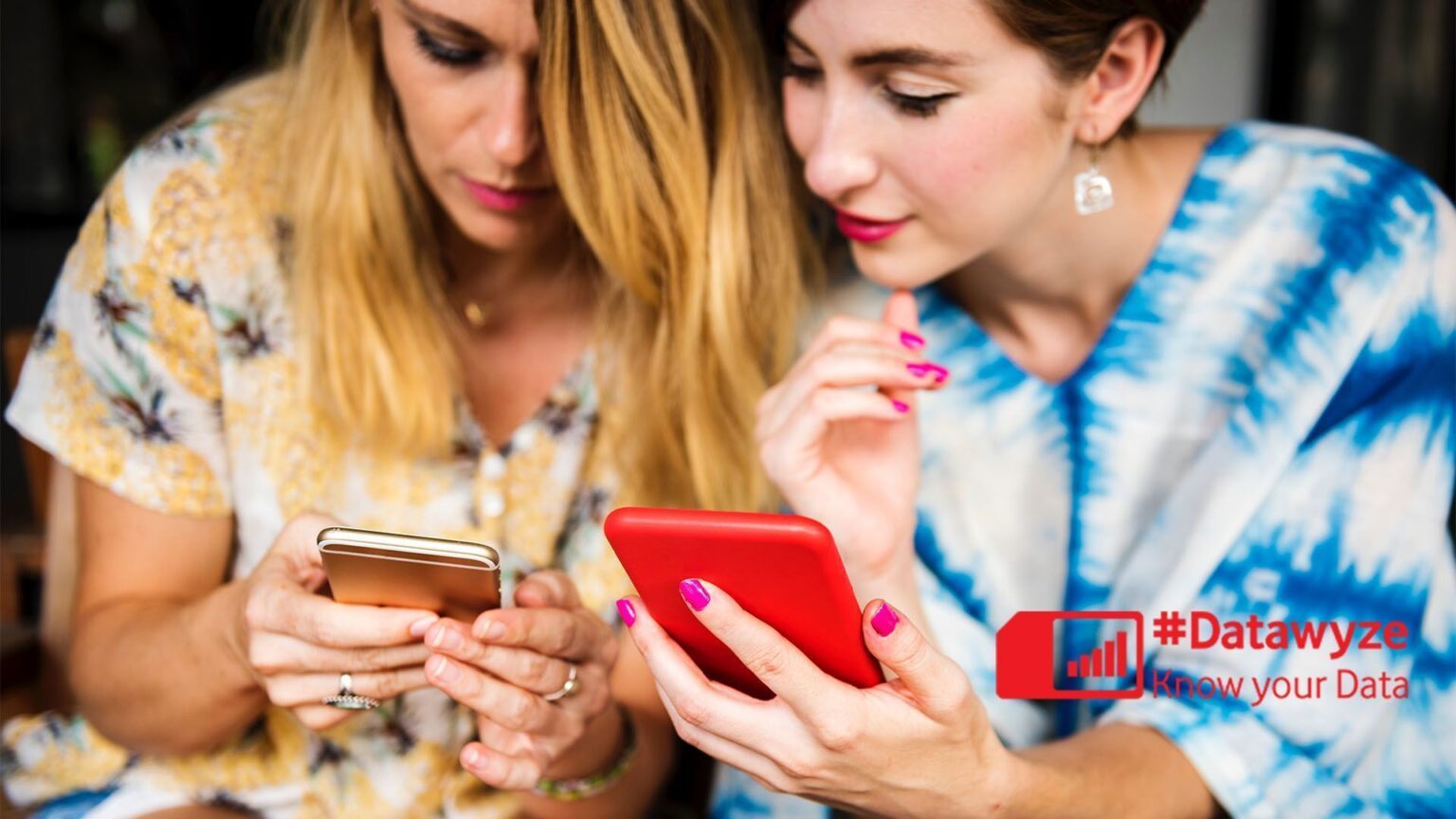The reality is that data isn’t disappearing – we’re just using much more data, much faster.
Global statistics compiled by Cisco show that mobile data usage is skyrocketing. Mobile data traffic grew by 69% – with mobile video making up about 55% of that data – and average individual smartphone data traffic usage grew by 45% in 2014.
This rapid increase in data usage goes hand-in-hand with the growth of faster networks – LTE for example generates up to 10 times as much traffic as 3G networks.
So what does this mean?
It means that smartphones are getting more and more data hungry. As the quality of video moves to high-definition 4K and smartphone cameras become ever more sophisticated, file sizes are increasing rapidly – and as a result consumers are using more data.
Without you even realising it, just watching a 10-minute HD YouTube video can use up to 150MB of your data. While system updates – like the Windows 10 upgrade – can use GBs of data in a couple of hours.
According to Cisco’s predictions, the average smartphone will generate 4GB of traffic per month by 2019, a fivefold increase over the 2014 average of 819MB per month.
So what has lead to this increased data usage?
Increased internet usage
Improved network speeds can contribute to increased data usage as you’re able to do more online, more quickly. Instead of a video or song taking time to download and buffer, it’s instant. This may give you the feeling that your data is being used much faster than usual.
Over the past year alone, Vodacom has increased its number of LTE sites to over 3 600 across the country and 3G coverage is now available to over 96% South Africans.
The simple fact that networks are getting faster means that people are using more data by doing more online – like watching videos, using maps for navigation in the car, and uploading photos to Instagram.
Software updates
Software updates can also be responsible for an increase in data usage. A good example is the current Windows 10 update – while it may be free to download it still requires a lot of data (3GB) to get it installed and keep it updated. Make sure that you check your settings and ensure that app and system updates aren’t set to update over your data connection. If you don’t want to use the data from your data package it’s best to wait until you’re on a Wi-Fi network.
In addition, make sure you check how much data individual apps are using, some apps go online in the background constantly, which can use a lot of data – and battery life – without your knowledge.
Consumption has changed
The main reason we’re using so much more data than we were even a year ago, is that our smartphones are becoming more entrenched in all our daily activities. We are constantly communicating over email, WhatsApp, Facebook, Twitter and any other number of platforms at one time.
We’re using our smartphones to research restaurants, order taxis, get directions and track our every move with fitness apps like Fitbit. To make sure we don’t lose our photos and information, many of us sync our photos and documents to multiple cloud platforms such as Google Drive and Dropbox.
Uploading 100s of 5MP photographs quickly adds up and apps like Flickr give users up to 1TB free storage – that’s a lot of data. The ability to record, upload and watch high-quality HD videos and take high-resolution images means that we’re using our phones as portable TVs and cameras all the time.
The more integrated the internet becomes in our lives, the more data we are going to use – and our usage is only going to increase.
The VodaPay App is a useful tool to help you monitor your usage and buy more data when you need to. Vodacom also sends out automatic SMSes notifying you when you’re about to run out of data as well as when it’s run out altogether.
Tips to manage your data usage
- Switch off your data connection when you’re not using it. Apps often perform functions behind the scenes that will use data without your realising it.
- Turn off automatic updates over data connections and rather use Wi-Fi for backing up lots of files or updating your apps.
- Check how much data individual apps are using and adjust the settings where possible to avoid using your data connection.
- Make sure you have a quality anti-virus program on your device such as Norton or Symantec.
- Streaming music and watching movies on your phone uses data very quickly – use with caution.
- Make sure that you have signed up for the right amount of data for your needs to avoid running out before month end.
- Pay attention to the Vodacom SMS notifications that let you know that your data bundle is running low or has been depleted and buy additional data bundles if needed.
For Apple devices: Wi-Fi assist in iOS9
Apple has introduced a new feature within iOS9 called Wi-Fi Assist, which will switch a device to mobile data if Wi-Fi connectivity is poor. That means, for example, if you are making a FaceTime Video or Audio call using Wi-Fi and the router loses its internet connection, or the connection degrades, you’ll stay connected to the Wi-Fi network, but your device will use mobile data.
When you update most devices to iOS9 (except for these models: iPhone 4s, iPad 2, iPad 3rd generation, and iPad mini 1st generation), or buy an iPhone 6s/6s+, this feature is automatically switched on (although it will not operate when you are roaming).
To manage Wi-Fi Assist, select Settings > Mobile data and scroll right to the bottom of the page. You will find a Wi-Fi Assist toggle switch which allows you to turn it on and off.
For more information about Wi-Fi Assist please see this Apple Support article:https://support.apple.com/en-us/HT201299.
Find out how much data you have left
- Log onto My Vodacom at www.vodacom.co.za to view and track your account information.
- Activate daily email notifications, by sending an SMS with the keywords: DNES ON ‘your email address’ to 123.
- Download the free VodaPayApp on your phone to help you keep track of your account balances.
- Check your balance via USSD by dialling *111#
- Use third-party applications such as Data Manager to help you track your usage.


